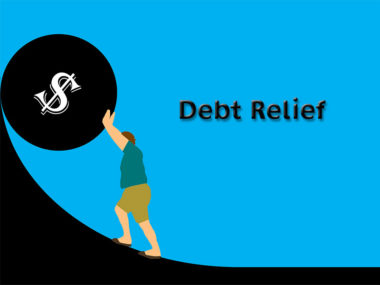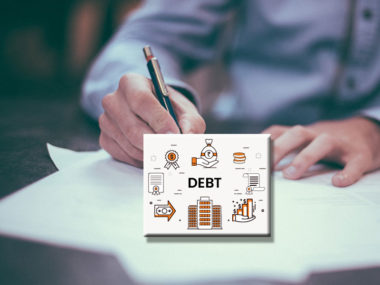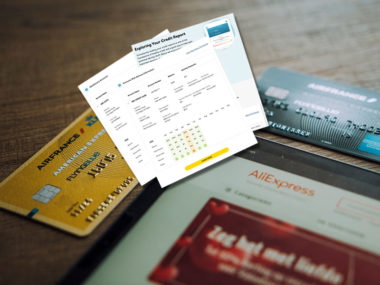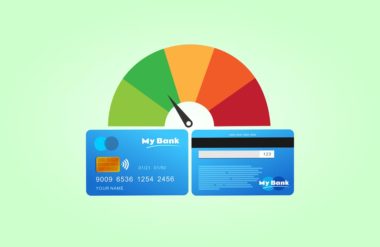Teaching your children at a young age about credit, credit cards, and debt can help them establish a necessary knowledge base as well as shape their financial future. While it can be tough to explain a complex subject like credit to a teenager, it’s wise to create a foundation for fiscal responsibility.
Table of Contents
Credit for Kids
Before your children can understand the ins and outs of a credit card, it’s crucial to start with that first word: credit.
The main point you want your children to understand about credit boils down to this: it’s measured as a credit score, or a three-digit number that shows how financially trustworthy you are. Understanding how both earning money and borrowing money works is important for this point.
It’s also important to emphasize there is good debt and bad debt. Good debt can increase credit, while bad debt can hurt your score. Having a car loan that you pay on time every month is good; spending more money than you make each month is bad.
To help them further understand the concept, you should try to give your child examples of what credit is used for. Want to get a loan for a new house? A new car or motorcycle? A better credit score means a better loan – and can affect even getting a loan in the first place.
How to Teach Interest Rates
Once they understand credit, the next major point to bring up is interest. Credit cards can be hard for even adults to understand, so it’s best to start simple and build on what they already know.
First, using a credit card does not mean free money. It’s borrowing money, and the longer it takes to pay back, the more you owe. Unless, of course, you pay it all back each month. Even then, there is a cap – a credit limit – on how much they can spend on the card before it’s no longer accepted as payment.
Using the borrowed money means your kids can delay payments – such as waiting for a paycheck if they have a part-time job as a teenager. But, they should not rely on using a delayed payment method – drawing directly from a bank account with a debit card is a best practice until they truly understand how to use a credit card. Be sure to explain the difference between a debit card and a credit card, as your children may see you use both.
Teaching Kids How to Build Credit
Next, combine the previous two ideas. By having some revolving debt each month, they can improve their credit. By paying on time, and keeping less than 30 percent of their credit limit used on the card, it will make them look better to banks and other lenders.
Not following this advice, however, could lead to bad credit. Not paying on time, using too much of the card’s limit, having too many cards – all of this could hurt your child’s score. It’s much harder to go from bad credit to good, instead of starting off with good practices and maintaining them. The priority here is making sure they have the knowledge and tools to keep their credit score high. Emphasize that fiscal responsibility could make their lives much easier down the line, while poor credit could mean they don’t have a new cell phone or car when all their friends do.
Kids and Credit Cards
There are a few other details to explain about credit cards to children. Though it certainly sounds like money, and you can pay for things with credit, there are differences. Cash stolen out of your pocket is very hard to recover, and you may just have to live with the loss. A stolen credit card can be cancelled, so that it can’t be used by the thieves to go on a spending spree. And if they do, you can prove you didn’t buy the items and have the money returned to you. Be careful to explain that just simply saying they didn’t buy an item when they did will not work — that’s credit card fraud, and is illegal.
Paying with a credit card can also lead to bonuses, such as cash back or credit with a specific store — something you won’t receive if you only pay in cash.
Secured Credit Cards and Authorized Users
Some people learn by doing. If you get a secured credit card for your child or set them up as an authorized user on an existing credit card of your own, then you can help them learn the ins and outs of credit card usage in real life, while keeping some training wheels attached.
Secured credit cards are a line of credit that’s good for people without much of an existing credit history or who are anxious about overspending with a credit card. The “secured” in secured credit card comes from the security deposit that’s required before you get one. Unlike traditional credit cards, which can be paid off at the end of each billing cycle, a secured credit card asks the user to pay the value of their credit limit before they can use the card at all. This helps parents to control exactly how much their children are spending with their credit cards, all as they learn the ins and outs of using one and building credit.
If you’re not ready to give your child their own credit card — even a secured credit card — then you may consider putting them on your own credit card as a an authorized user. However, keep in mind that an authorized user on your account can use your line of credit just as you would, without being held accountable for the bill. If you do decide to make your child an authorized user, make sure that you set clear boundaries about how and when they can use it.
It can be hard to explain credit cards to children, even into the teenage years, but it’s an important financial topic that you should introduce as early as you can. Start with basics, and build on those. Try some exercises with physical objects, eventually moving on to math problems on paper. Knowledge is certainly power in the financial sphere, and giving your children the tools to be successful early on will pay dividends as they move through their lives.





